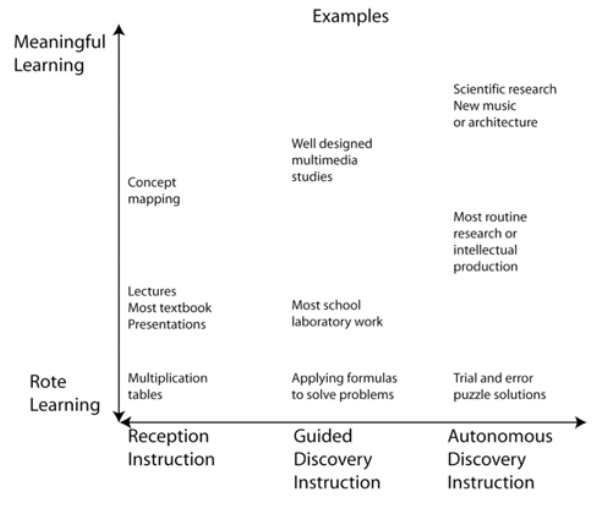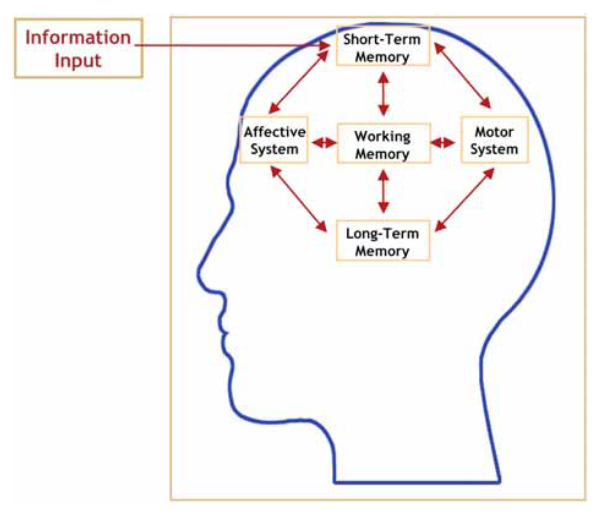−Table of Contents
The theory underlying concept maps and how to construct them (Novak, 2006)
Citation - people
Keyword - concept map
Introduction
“Concept maps are graphical tools for organizing and representing knowledge.” (p.1)
概念圖是由 Novak 於1972年,在他於Cornell大學開設的研究計畫課程中發展出來的。一開始 Novak 的目的是為了瞭解兒童再學習前後對科學知識的變化(Novak & Musonda, 1991)。研究者訪談了許多兒童,但是發現藉由訪談內容很難找出兒童在學習前後有具體的知識變化。
根據David Ausubel 的學習心理學理論:學習在於將新概念與命題的同化(assimilation)入學習者既有的概念與命題框架中。此一學習者所擁有的知識架構,也稱為認知架構(cognitive structure)。因此,Novak 設計出概念圖此一工具,用來表徵學習者在學習前後的知識結構,藉以了解學習者的知識變化。
Features Definition
- Concept - “We defined concept as a perceived regularity in events or objects, or records of events or objects, designated by a label.”
- Proposition - “Propositions are statements about some object or event in the universe, either nature occurring or constructed. Propositions contain two or more concepts connected using linking words or phrases to form a meaningful statement.”
- Hierarchical - “most inclusive, most general concepts at the top of the map and the more specific, less general concepts arranged hierarchically below.”
- Context & Focus question - “The hierarchical structure for a particular domain of knowledge also depends on the context in which that knowledge is being applied or considered. Therefore, it is best to construct concept maps with reference to some particular question we seek to answer, which we have called a focus question. ”
- Cross-links - “There are relationships or links between concepts in different segments or domains of the concept map. Cross-links help us see how a concept in one domain of knowledge represented on the map is related to a concept in another domain shown on the map. In the creating of new knowledge, cross-links often represent creative leaps on the part of the knowledge producer.”
- “specific examples of events or objects [that] help to clarify the meeting of a given concept.”
Psychological foundation
Discovery Learning, Reception Learning
- discovery learning | 發現式學習 -
0-3歲兒童的學習都是這類 “where the individual discerns patterns or regularities in events or objects and recognized these as the same regularities labeled by older persons with words or symbols.” 從事件或物件中分辨出樣式或規律,並將這些規則與以往其他人命名的相同樣式或規則在認知上加以關聯。 (Macnamara, 1982) - reception learning | 接收式學習 -
3歲習得語言之後,新概念與命題的學習大多是靠語言 “where new meanings are obtained by asking questions and getting clarification of relationships between old concepts and propositions and new concepts and propositions.” 透過問問題,與釐清既有概念及命題與新概念及命題間的關係,獲得新的意義(知識)。
Meaningful Learning
Ausubel 進一步區分前述兩種學習。發現式是學習者主動自發的(autonomously|自律地)習得概念的屬性;接收式學習是被動的使用與接收以語言描述的概念屬性。因此,藉此一面向 Ausubel 區分兩種學習:
- meaningful learning(意義學習)
- rote learning(背誦學習)
意義學習有三種條件:
- 學習素材必須以學習者先前知識的語言並清楚地呈現。
- 學習者必須擁有相關的先前知識。
- 學習者必須願意做有意義的學習。
意義-背誦學習,教學設計、與教學素材形式的關係:
Memory
- 記憶的結構:人的記憶並不像「瓶子」一樣,而是一複雜的互相相關記憶系統。上圖(Fig.4)描繪人的記憶系統。資訊輸入之後,經短期記憶,分別由情感系統、工作記憶系統、動作系統處理,最後進入長期記憶。
- 工作記憶的限制:
“All incoming information is organized and processed in the working memory by interaction with knowledge in long-term memory. The limiting feature here is that working memory can process only a relatively small number of psychological units (five to nine) at any one moment.” | 所有進入記憶系統的資訊,都會在工作記憶階段,藉由與長期記憶的知識互動,以進行資訊的組織與處理。此處的功能限制在於,工作記憶同時只能以有限數量的心理單元(五到九個)處理資訊。
“This means that relationships among two or three concepts are about the limit of working memory’s processing capacity.” | 這表示工作記憶的能力只限於同時處理兩到三個概念間關係。
- 背誦學習的記憶
“in rote learning, there is little or no integration of new knowledge with existing knowledge resulting in two negative consequences. First knowledge learned by rote tends to be quickly forgotten, unless much rehearsed. Second, the knowledge structure or cognitive structure of the learner is not enhanced or modified to clear up faulty ideas. Thus misconceptions will persist, and knowledge learned has little or no potential for use in further learning and/or problem solving (Novak, 2002).” | 背誦學習幾乎沒有產生能與既有知識整合的新知識。這導致兩種缺點:第一,死記習得的知識會被很快的遺忘;第二,學習者的認知結構或知識結構並沒有清理掉錯誤的概念,因此不正確的理解會繼續存在,而習得的知識不可能用在往後的學習或是問題解決工作中。
related: memory
Epistemological Foundation
New knowledge creation|新知識創造
“Novak has argued that new knowledge creation is nothing more than a relatively high level of meaningful learning accomplished by individuals who have a well organized knowledge structure in the particular area of knowledge, and also a strong emotional commitment to persist in finding new meanings (Novak, 1977, 1993, 1998).” | Novak 認為新知識創造就是與高階意義學習相關的,努力發現新意義的,由個人所完成的特定領域知識結構。
“Epistemology is that branch of philosophy that deals with the nature of knowledge and new knowledge creation.” | 認識論(知識論)是哲學的一支,探討知識的本質與新知識的產生。
- 新知識的產生,是來自於創造出新的有意義的概念與命題組合。
Constructing Good Concept Maps
- 設定使用情境(create context)
- 概念圖的使用情境決定概念圖的結構
- “Since concept map structures are dependent on the context in which they will be used, it is best to identify a segment of a text, a laboratory or field activity, or a particular problem or question that one is trying to understand.” | 因為概念圖的結構是根據概念圖所使用的情境所決定,所以最好由一文本、一實驗室或活動領域、一特定問題的一部份開始。
- 建立焦點問題(construct a Focus Question)
- 焦點問題,是指此概念圖想要解決的問題(即,此概念圖繪製的目的)
- 建立焦點問題有助於定義概念圖的情境
- 好的焦點問題也有助於繪製出更豐富的概念圖
- 找出關鍵概念(identify key concepts)
- 通常15-25個概念就足夠了
- 列出這些概念,然後根據這些概念涵蓋範圍大小,由大到小排列。此一清單稱為待位區(parking lot),因為隨後將會把這些概念移入概念圖中。
- 並非所有概念都必須要移入概念途中,繪製者只要移入有關聯的概念即可。
- 建立初步概念圖(construct a preliminary concept map)
- 可使用Post-it,或IHMC CmapTools (Cañas et al., 2004b, http://cmap.ihmc.us)軟體。
- 概念圖需要不斷的修改。好的概念圖通常經過三次以上的修改。
- 尋找跨連結 (seek Cross-link)
- 結合不同部分或不同知識領域的概念。
- 幫助學習者認知與整合不同部分的概念,認識到所有概念都是相關的。
- 盡可能精確的找出概念節點間的連結字(link words)。
- 應該避免做出只是有節點的句子(sentences in the boxes)。這種字串圖(string map)無助於理解,也不適於概念圖的重構。
- 修飾概念圖
找出連結線上文字的困難
因為對概念間的關係,或對概念本身的意義缺乏理解 只要學生可以做出一個好的連結字,他就能找出所有概念間的連結字。(這顯示了建立概念連結關係,還需要相當程度無法明言的技巧) 學生需要找出最佳的連結字。這個過程涉及 Bloom (1956) 所稱的知識評估與綜合這類高階認知工作 當概念圖繪製成功的時候,是一種產生高階認知工作的簡單方法。這也是概念圖繪製能成為一有效評估工具的原因(Edmondson, 2000)。
CmapTools Software
The CmapTools Software Toolkit 介紹。略
A New Model for Education
介紹概念圖教學法。略。
Concept Maps for Evaluation
以概念圖作為教學評量工具。略。
Concept Maps and Curriculum Planning
概念圖與課程計畫。略。
Capturing and Archiving Expert Knowledge|取得專家知識
以概念圖作為取得專家內隱知識的工具。
- 使用概念圖分析專家內隱知識的相關資料時,很容易發現遺訪談所得與文獻資料漏了哪些「內隱知識」的概念。因此,概念圖不只能呈現專家知識,也能發現訪談取得資料中的知識結構缺陷。
- 其他專家知識取得的方法(interviews, case study analyses, “critical incident” analyses and similar techniques)各有所長,但是概念圖也能以概念圖做出最好的呈現方式。
Note
- 科學知識:
Novak 研究的知識習得是科學知識,並且應該是指已明確化自然科學知識。因為他舉的例子都是自然科學知識,如「為什會會有四季」。自然科學知識的命題結構原則上都是客觀一致的,概念圖可以協助學習者在科學知識的學習上,更明確的將自己個人的先前知識與所接受的外在知識命題整合,或是說「內化」,以確定其學習是有意義的理解,而非無意義的背誦記憶。但是,對於並不存在確定客觀一致性的知識領域,如人文知識、變動中的新科學前沿、社會生活知識、等等,並沒有一個所謂「正確知識」的座標參考系統,概念圖雖可以有助於概念與命題的呈現表徵(但有限度的),但是仍然有許多不確定性存在(客觀知識的認定、有效知識的檢驗、人言人殊的不一致性),使效果大為降低;但是概念圖的繪製成本高昂,兩相權衡下,概念圖這種學習工具似乎並不完全適用於這一方面的學習工作。 - 前期Wittgenstein傾向:
在認識論基礎一節,Novak 的說法類似於前期Wittgenstein的語言圖像論。這令我有點訝異,因為我本來以為建構主義者通常會比較傾向後期Wittgenstein的想法,而反對語言圖像論的認識論基礎。 - 野中學派的內隱知識:
只要使用「內隱知識(tacit knowledge)」的時候引用到 Nonaka – 一部分學者只引用 Nonaka,另一些是連 Polanyi 一起引 –,大多跟著 Nonaka 對知識管理取向的定義走;而非 Polanyi 原本關懷的認識論問題。而這兩者其實有本質上的差別。簡單的說,兩人對於知識可否是能像物件那樣傳遞的可能性,認知完全不同:Polanyi 基本上認為知識是個人的,有不可傳遞性; 而 Nonaka 則否,因為他認為知識的外顯與傳遞可以增加企業利益。 Novak 只用 Nonaka,在專家系統一節中也是沿著管理學派的路子發展。
Metadata
file link - Google Schloar, XXC

